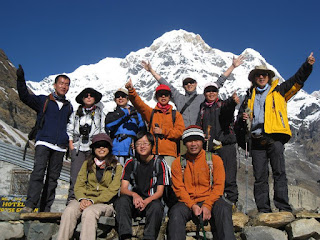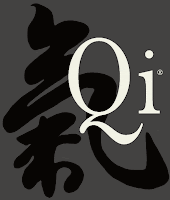195. Hiking is good for the brain
2019
Mt Lao Qingdao, China
Seattle Olympic and Mt Rainier Trekking
2018
Xiamen Mt. Wuyi, China
Chamonxic Swiss side trekking
Gn Sindoro Indonesia
2017
Gn Semeru Indonesia
Mt Shimeji, Japan
Mt Hehuan Taiwan
2016
Gn Merbabu Indonesia
Penang Hill Malaysia
Chamonix French side trekking
Tim Janis's Music
This picture above was taken @ Myanmar, Shan State 2015. A journey towards Inle lake.
This picture below was taken @ Northern India Himalaya Region 2014.
This picture was taken @ Kazakhstan/Kyrgyzstan border, Tiehshan Region/ Mount Khan Tengri 2013
On top of Mount Kilimanjaro. This is our chief trek leader Daniel Ngowi. ( We visited Kilimanjaro in 2012)
This picture was taken @ Annapura Base Camp, Nepal 2011.
This picture was taken @ Rinjani, Lombo, Indonesia 2010.
This picture was taken @ Mount Kinabalu West Malaysia 2009.
Do I buy the idea of trekking and hiking is good for the brain? My answer is, Yes definitely because once we start to move using legs, "Qi or energy within the body flows" or "Blood circulation" starts the moment we step into the Nature.
Blood vessels resonant which produce Qi; hidden energies circulate in a body along with fourteen hidden meridian bio-lines , which in turn promote blood flow. -- Simon Kong
Trekking/ Hiking brings us back to nature, from there; we explore our inner self, unleashing our creative juice.
"According to a study published last July in Proceedings of the National Academy of Sciences, a 90-minute walk through a natural environment had a huge positive impact on participants. In a survey taken afterwards, those people who took the natural walk showed far lower levels of brooding, or obsessive worry. The control group who spent that 90 minutes walking through a city reported no such difference. Reference :www.wimp.com "
What is the magnitude of mountain is suitable for hikers/trekkers in general?
My answer is: it depends...on an individual brain, its vulnerability !!! Not a person physical build or Age that matter.
Hiking/Trekking is a very individual event as each person has he/her own body comfort level. What do i mean by body comfort level; this comfort level is where we start to develop mountain sickness,i.e. AMS. Some people would relate it to spiritual connections or offended some dieties or punishment or believe attacked by evil spirits. Over here I would not like to speculate and would like to simplify it as a brain way of adjustment to mountain altitude, the brain reaction towards a change in mountain height, as define as body Comfort Level.
We admire people who can climb high mountains, however if a person already experience AMS at sea level, normally these unfortunate people may need to put in more efforts and precautions for mountain trekking/hiking activities or choose other forms of sport activity.
I would like to suggest ranges of mountain suitable generally for hobby or professional persue:
1. 1000m to 2000m Leisure activites with some training. Especially it is suitble for people already experience some form of AMS in normal daily life, for example consistent headaches, motion sickness, asthma attack. This range of mountain is not neccessary being easy, take one example mount Tahan @2187m, its terrain can be challenging.
2. 2000m to 4000m For mountain trekking/hiking enthusiasts where a duration of pre-trainig is required. The training varies from six months to a year.
3. 4000m to 5000m This is a threshold limit of trekking/hiking activity for a normal person, take more precaution.
4. 5000m and above. This is a challenging level, usually it requires special equipment and sustain pre-training. We may need to take note that for mountains above 5000m are usually snow capped mountains ( a tendency of having less snow now because of global warming). We are crossing into specialised mountaineering area that is beyond my knowledge and experience for sharing.
Best ways of overcoming AMS are mainly considering abcdef factors, ie. a. Descending to a lower altitude ground, b. Proper physical & mental pre-training, c. Reasonable length of acclimatisation at high land, d. Go up high and rest low activity, e. Listen to your body, f. Other complimentary ways of reducing AMS are Oxygen chamber pre-conditioning, Hyperbaric training, EEG brainwave high performance training, proper doctor's advise of taking AMS medicines like Diamox, Viagra, 红景天 (a Tibetian herb), or Aspirin for promoting blood flow; use Aspirin not as a pain killer, it is dangerous to suppress the pain.
5. Overcome Mental-Mountain beyond mountain altitude barrier: The mental mountain is our character. Education consists of knowledge gathering and character building. In the present world education system it does not take care very well of character building. Hiking and trekking can fulfill part of the character building process. For example leadership training is in a form of character building: We could learn how to behave as a good leader when a situation call for or learn how to behave as a good follower; a model follower for other to emulate.
Let's begin with Hiking/Trekking. Find your body comfort level, be your best, don't rush. We don't conquer the mountain, we are humble before the mountain. Hiking/Trekking is good for you and others.
Reflection Time
.
Hiking or Trekking is an optional activity. Do it often until it becomes a habit. -- Simon Kong
If you have no time or not convenient to hike a mountain. Just listen to all these music that you will receive the same satisfaction as they all share with the same M. M is for Music, M is for Mountain and they are always there for you to explore your inner peace.
NB: Hiking vs Trekking, check their meaning with this link.
https://www.quora.com/What-is-the-difference-between-hiking-and-trekking
Mt Lao Qingdao, China
Seattle Olympic and Mt Rainier Trekking
2018
Xiamen Mt. Wuyi, China
Chamonxic Swiss side trekking
Gn Sindoro Indonesia
2017
Gn Semeru Indonesia
Mt Shimeji, Japan
Mt Hehuan Taiwan
2016
Gn Merbabu Indonesia
Penang Hill Malaysia
Chamonix French side trekking
Tim Janis's Music
This picture above was taken @ Myanmar, Shan State 2015. A journey towards Inle lake.
This picture below was taken @ Northern India Himalaya Region 2014.
This picture was taken @ Kazakhstan/Kyrgyzstan border, Tiehshan Region/ Mount Khan Tengri 2013
On top of Mount Kilimanjaro. This is our chief trek leader Daniel Ngowi. ( We visited Kilimanjaro in 2012)
This picture was taken @ Annapura Base Camp, Nepal 2011.
This picture was taken @ Rinjani, Lombo, Indonesia 2010.
This picture was taken @ Mount Kinabalu West Malaysia 2009.
Do I buy the idea of trekking and hiking is good for the brain? My answer is, Yes definitely because once we start to move using legs, "Qi or energy within the body flows" or "Blood circulation" starts the moment we step into the Nature.
Blood vessels resonant which produce Qi; hidden energies circulate in a body along with fourteen hidden meridian bio-lines , which in turn promote blood flow. -- Simon Kong
Trekking/ Hiking brings us back to nature, from there; we explore our inner self, unleashing our creative juice.
"According to a study published last July in Proceedings of the National Academy of Sciences, a 90-minute walk through a natural environment had a huge positive impact on participants. In a survey taken afterwards, those people who took the natural walk showed far lower levels of brooding, or obsessive worry. The control group who spent that 90 minutes walking through a city reported no such difference. Reference :www.wimp.com "
What is the magnitude of mountain is suitable for hikers/trekkers in general?
My answer is: it depends...on an individual brain, its vulnerability !!! Not a person physical build or Age that matter.
Hiking/Trekking is a very individual event as each person has he/her own body comfort level. What do i mean by body comfort level; this comfort level is where we start to develop mountain sickness,i.e. AMS. Some people would relate it to spiritual connections or offended some dieties or punishment or believe attacked by evil spirits. Over here I would not like to speculate and would like to simplify it as a brain way of adjustment to mountain altitude, the brain reaction towards a change in mountain height, as define as body Comfort Level.
We admire people who can climb high mountains, however if a person already experience AMS at sea level, normally these unfortunate people may need to put in more efforts and precautions for mountain trekking/hiking activities or choose other forms of sport activity.
I would like to suggest ranges of mountain suitable generally for hobby or professional persue:
1. 1000m to 2000m Leisure activites with some training. Especially it is suitble for people already experience some form of AMS in normal daily life, for example consistent headaches, motion sickness, asthma attack. This range of mountain is not neccessary being easy, take one example mount Tahan @2187m, its terrain can be challenging.
2. 2000m to 4000m For mountain trekking/hiking enthusiasts where a duration of pre-trainig is required. The training varies from six months to a year.
3. 4000m to 5000m This is a threshold limit of trekking/hiking activity for a normal person, take more precaution.
4. 5000m and above. This is a challenging level, usually it requires special equipment and sustain pre-training. We may need to take note that for mountains above 5000m are usually snow capped mountains ( a tendency of having less snow now because of global warming). We are crossing into specialised mountaineering area that is beyond my knowledge and experience for sharing.
Best ways of overcoming AMS are mainly considering abcdef factors, ie. a. Descending to a lower altitude ground, b. Proper physical & mental pre-training, c. Reasonable length of acclimatisation at high land, d. Go up high and rest low activity, e. Listen to your body, f. Other complimentary ways of reducing AMS are Oxygen chamber pre-conditioning, Hyperbaric training, EEG brainwave high performance training, proper doctor's advise of taking AMS medicines like Diamox, Viagra, 红景天 (a Tibetian herb), or Aspirin for promoting blood flow; use Aspirin not as a pain killer, it is dangerous to suppress the pain.
5. Overcome Mental-Mountain beyond mountain altitude barrier: The mental mountain is our character. Education consists of knowledge gathering and character building. In the present world education system it does not take care very well of character building. Hiking and trekking can fulfill part of the character building process. For example leadership training is in a form of character building: We could learn how to behave as a good leader when a situation call for or learn how to behave as a good follower; a model follower for other to emulate.
Let's begin with Hiking/Trekking. Find your body comfort level, be your best, don't rush. We don't conquer the mountain, we are humble before the mountain. Hiking/Trekking is good for you and others.
Reflection Time
.
Hiking or Trekking is an optional activity. Do it often until it becomes a habit. -- Simon Kong
If you have no time or not convenient to hike a mountain. Just listen to all these music that you will receive the same satisfaction as they all share with the same M. M is for Music, M is for Mountain and they are always there for you to explore your inner peace.
NB: Hiking vs Trekking, check their meaning with this link.
https://www.quora.com/What-is-the-difference-between-hiking-and-trekking









